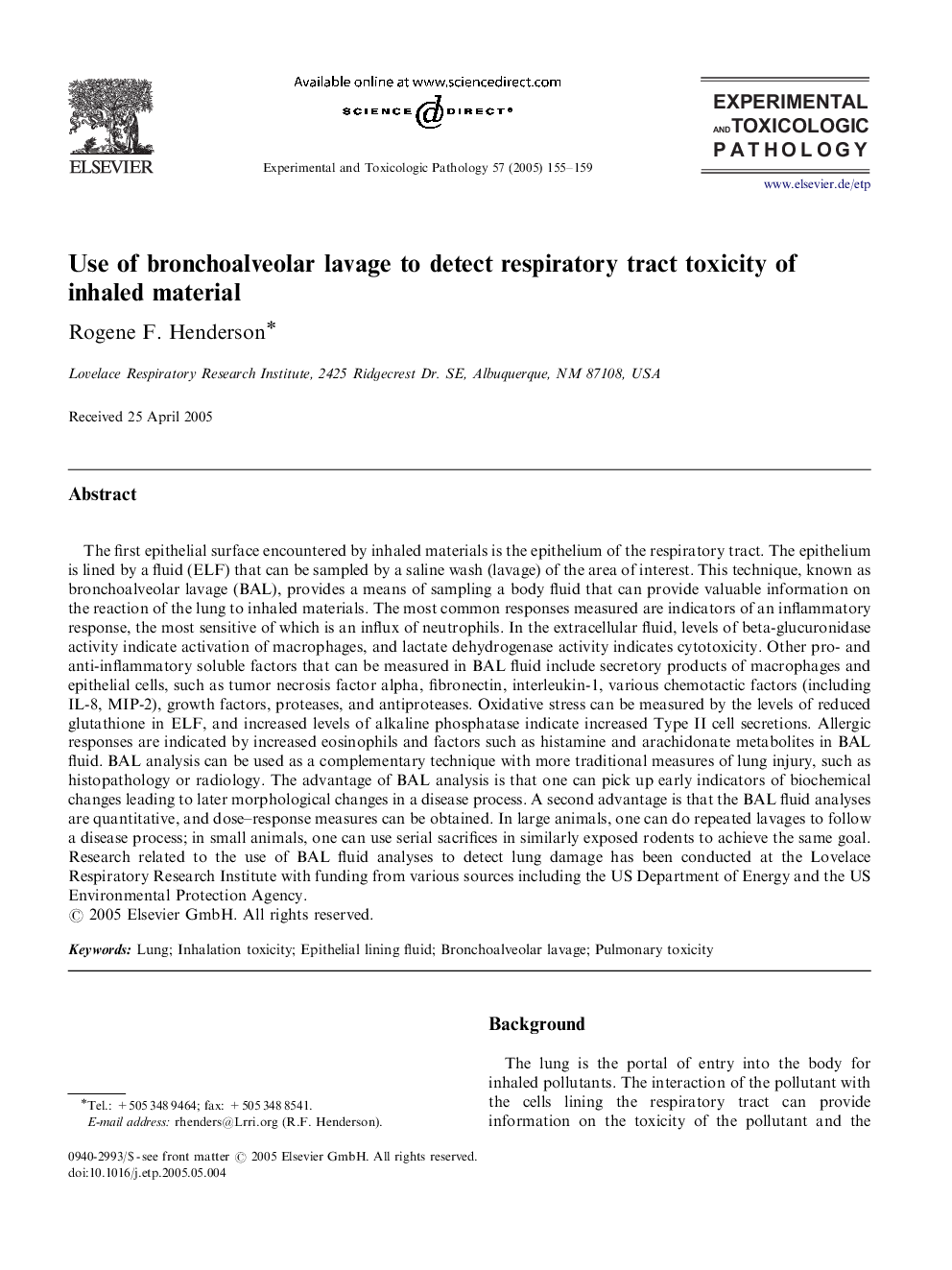| Article ID | Journal | Published Year | Pages | File Type |
|---|---|---|---|---|
| 9000457 | Experimental and Toxicologic Pathology | 2005 | 5 Pages |
Abstract
The first epithelial surface encountered by inhaled materials is the epithelium of the respiratory tract. The epithelium is lined by a fluid (ELF) that can be sampled by a saline wash (lavage) of the area of interest. This technique, known as bronchoalveolar lavage (BAL), provides a means of sampling a body fluid that can provide valuable information on the reaction of the lung to inhaled materials. The most common responses measured are indicators of an inflammatory response, the most sensitive of which is an influx of neutrophils. In the extracellular fluid, levels of beta-glucuronidase activity indicate activation of macrophages, and lactate dehydrogenase activity indicates cytotoxicity. Other pro- and anti-inflammatory soluble factors that can be measured in BAL fluid include secretory products of macrophages and epithelial cells, such as tumor necrosis factor alpha, fibronectin, interleukin-1, various chemotactic factors (including IL-8, MIP-2), growth factors, proteases, and antiproteases. Oxidative stress can be measured by the levels of reduced glutathione in ELF, and increased levels of alkaline phosphatase indicate increased Type II cell secretions. Allergic responses are indicated by increased eosinophils and factors such as histamine and arachidonate metabolites in BAL fluid. BAL analysis can be used as a complementary technique with more traditional measures of lung injury, such as histopathology or radiology. The advantage of BAL analysis is that one can pick up early indicators of biochemical changes leading to later morphological changes in a disease process. A second advantage is that the BAL fluid analyses are quantitative, and dose-response measures can be obtained. In large animals, one can do repeated lavages to follow a disease process; in small animals, one can use serial sacrifices in similarly exposed rodents to achieve the same goal. Research related to the use of BAL fluid analyses to detect lung damage has been conducted at the Lovelace Respiratory Research Institute with funding from various sources including the US Department of Energy and the US Environmental Protection Agency.
Related Topics
Life Sciences
Agricultural and Biological Sciences
Animal Science and Zoology
Authors
Rogene F. Henderson,
